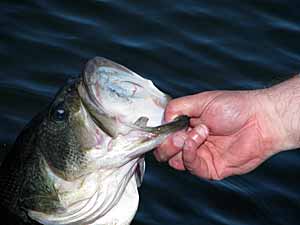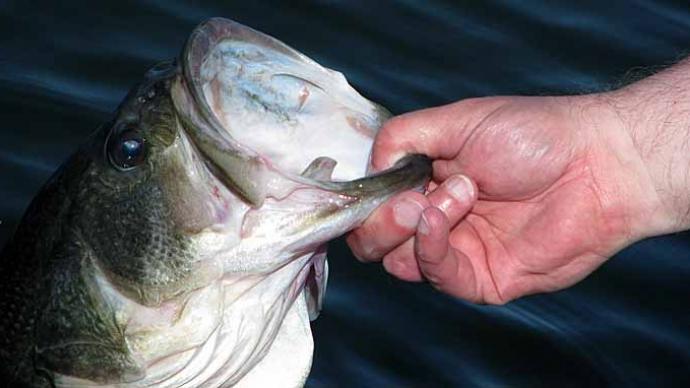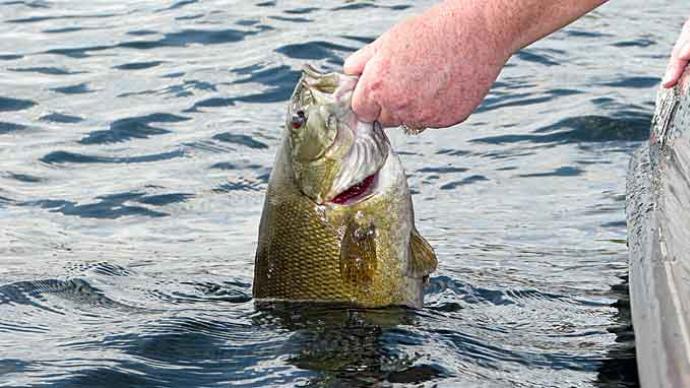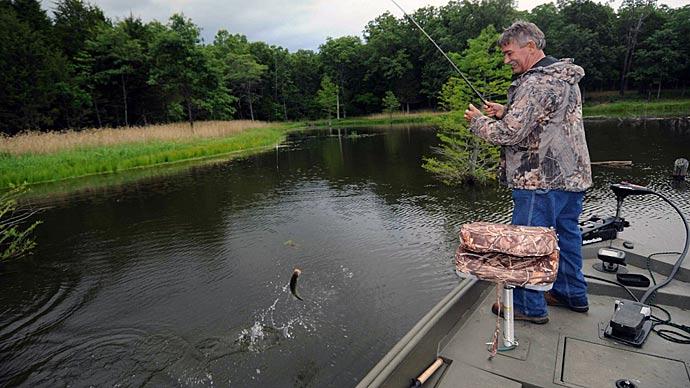
Run and gun anglers cringe when asked how they do it. The finesse anglers laugh when they see the run and gun anglers cringe when asked about it. It's a reoccurring theme for fishing, yet most anglers look over this very basic concept; if you think you are fishing slow enough, slow down some more.
The precept of aggressive fishing is taught to all anglers to get the most active fish. Although this is a great way to fish in developing a pattern, anglers have difficulty slowing down once the pattern is developed and refined.
Upon launching the boat and starting the fishing day, almost all anglers will automatically pick up a lure that's considered a search lure. These range from your assorted topwater lures to spinnerbaits and crankbaits. From the pre-spawn to the start of winter, almost all anglers will have a topwater lure tied on. This is taught to all anglers when they understand the various uses of all the lures. Although it's a great starting point, many anglers have difficulty slowing down once a pattern is developed.
Many anglers will ask how they can slow down, especially when the bass are destroying the lures they're using. The best answer is that anglers should continue to use the lures catching the most bass, but they should also think of what they should use when that "hot" bite disappears. Having the ability to take a step back and analyze the current situations will often have greater results, not only for the present but also for future outings.
Anglers must consider a few things when learning how to slow down. These include:
- The time of the year
- How that the seasons relate to bass behavior and locations
- The variety of lures that the bass are already hitting and the things that they will continue to hit
- What time of day you are fishing
- The current water conditions.
When fishing from the pre-spawn until the onset of winter, slowing down will produce more quality bites than the number of bites. Typically it's better to slow down when a significant cold front has come through and has pushed the bass tight to cover or because the usual fast-paced approaches are not working to the advantage of the angler.
Your ability to realize the signs indicate that the run and gun approach is not working will rely heavily on your ability to step back and see the conditions for what they are. Take, for example, an early morning bite consisting of bass nailing buzzbaits fishing along wooden cover. The other factors that come into play are the overcasts skies, the slightly stained water, and the water temperature hovering around the 64-degree area. Many anglers would believe that this would be a prime day for the buzzbait bite to continue through the day, and most anglers would continue to cast the buzzbait, even when they had not a bite over the past hour. To most, this wouldn't raise a red flag, but let's say that the bite in the early morning was fast and hard; within the first two hours, an angler had well over 40 fish, and they all of a sudden stopped.
This should raise a red flag, and for most, it would. However, let us say that if the bites were only coming in intervals of 15 minutes, then it shut down. Many anglers would believe that they had left an area with active fish and had moved on to a place with non-active fish. For the most part, they would be correct, but most of the anglers would have been just as content to fish the buzzbait. Being able to slow down and read the signs that say it's time to slow down will improve each angler's ability on the water. Although it may be extreme pain for some to slow down, doing it will be an excellent move for them.
Many anglers want to know what lures and techniques are employed when having to gear down. The most honest answer is that all lures and techniques can be employed. I would venture to say that a few of you who are reading this are now scratching your heads, wondering what I am talking about.
Take the buzzbait bite; great during the morning hours then shuts off. Since few lures mimic the buzzbait, you can slow down to a suspending jerkbait, a popping topwater lure, or even a long "trick" worm. These lures are fished along the top of the water columns (if you use a shallow running suspending jerk bait). Although they're not nearly as noisy or flashy as the buzzbait, they are less assuming. Thus, they will probably gain the attention of more bass because the anglers employing them have effectively slowed down their presentation.
Also, keep in mind that "slowing" down a presentation may not always be associated with the actual speed at which the lure is presented. Although a good part of the time refers to the actual presentation speed, it can also mean downsizing the lure.
For example, a spinnerbait is a very effective way of covering a lot of water, picking off active fish, and a great way of putting together a pattern, especially when determining the location of bass as they relate to cover. When wanting to slow down the presentation of the lure, you can go in two different directions; first, you can slow the bait down, that is, slow the retrieve, or you can even switch up the blade combinations of the lure. Second, you can decrease the size of the lure, which makes the lure less assuming.
There are also some very drastic measures that anglers can take to slow down their presentation. These very measures are the ones that most anglers cringe at and almost always hate to employ. However, they're proven to work time and time again, and for this reason, anglers accept the agony of slowing down for the more favorable fight of a large bass.
The first "drastic" measure is switching from a high-speed moving lure to the dreaded Carolina rig. Yes, fishing the Carolina rig is a prolonged presentation that, at times, can take upwards of 10-15 minutes to carry out a single cast and retrieve. Moving from fishing something very fast, such as a spinnerbait, to fishing the Carolina rig can cause a change that most anglers will not immediately recognize. Anglers are so used to fishing the spinnerbait quickly that they will start to fish the Carolina rig fast. Again, remember that if you feel that you are fishing slow enough, then slow down some more. The Carolina rig is meant to be fished at a languid, methodical pace. Most anglers recognize its use in summer's "dog days" when even the water seems to sweat. It's also recognized as a very effective cold water presentation. However, it can produce some very astounding catches during those "non-C-rig" days, when it seems that the faster presentations will work.
The next drastic presentations come into play when anglers change from fishing horizontally to fishing vertically. From spoons to the drop-shot rig, fishing vertically has been pushed to the wayside. The only exception is the drop-shot rig, which almost every angler is fascinated with, but not all anglers are willing to use. In the southern states especially, some anglers may fear being mocked if they use lines that are anything smaller than the diameter of a heavy-duty sea-faring line. Lines ranging from 6- to 10-pounds are often used when this presentation is employed, and for most southern bass anglers, when small lines are used, they're fishing for crappies or bluegills. However, the misconception is that you can't land a giant bass on such a light line. Having the right equipment for such a battle is mandatory, but that's another article.
Also, smaller lures leave some anglers feeling that they will only be catching small bass. Two trains of thought can go with this; first, the smaller baits will attract smaller bass, which in turn won't get the attention of the larger bass, or second, that the smaller lures are less assuming, which will cause the larger bass to take notice, and will induce a complete and utter will to dominate. Indeed, larger bass are easily tempted by an easy meal. They're opportunistic feeders, and although the larger bass would rather eat a large helping, most bass won't turn down a smaller meal that sits in front of them and won't move. This meal indeed has a death wish to bass and will usually get that wish.
The ability to slow down does take time, patience, and a willingness to keep at it. But once that ability is learned, the angler who employs it will catch more and larger bass. Being willing to learn this valuable trait will help you become a better angler. It will also give you the ability and insight to step back when the bites are seemingly not there and realize that slowing down might be the key to putting those extra few fish in the live well.
Stay safe on the water, and may all of your lines be tight.




